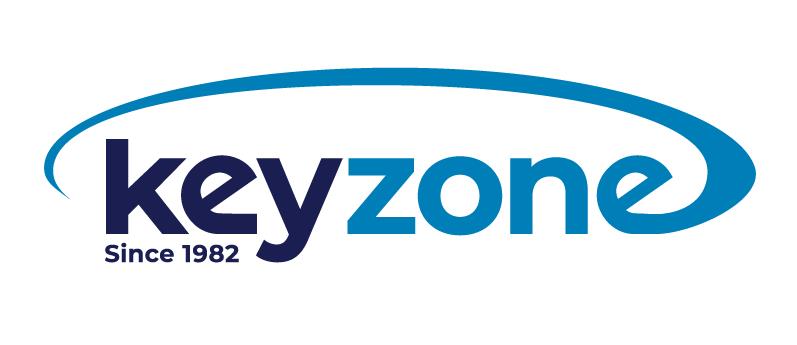We use cookies to make your experience better.
To comply with the new e-Privacy directive, you agree to the privacy policy and our use of cookies.
Intel Core i9-14900K processor 36 MB Smart Cache Box
SKU
BX8071514900K
Login for pricing
In Stock
Boxed Intel Core i9 processor 14900K (36M Cache, up to 6.00 GHz) FC-LGA16A
| Processor socket | LGA 1700 |
|---|---|
| Box | Yes |
| Processor cores | 24 |
| Processor family | Intel Core i9 |
| SKU | BX8071514900K |
| EAN | 5032037278522 |
| Manufacturer | Intel |
| Availability | In Stock |
| Product Family | Core |
| Product Series | i9 |
Ascend leaderboards, create worlds, and crunch numbers—all at once. Get next-generation performance for everything you do with the 13th Gen Intel Core processors. Do More with the Fastest Chip We’ve Ever Built.
Advancing Performance Hybrid Architecture
13th Gen Intel Core processors advances performance hybrid architecture with up to eight Performance-cores (P-core) and up to 16 Efficient-cores (E-core), combined with workloads intelligently routed by Intel Thread Director.
Built for Modern Gaming
Built for gamers looking for maximum performance to play the latest games, while also having the capabilities to tackle other workloads. New 13th Gen Intel Core processor-based PCs make it all possible.
Superior Creating Experience
The 13th Gen Intel Core processor family offers faster P-cores and more E-cores with support for DDR4/DDR5 and PCIe 4.0/5.0. That provides a platform that can max out multitasking and choice for configurability.
Customize for What You Do Every Day
13th Gen Intel Core processors deliver highly flexible architecture and industry-leading tools for the ultimate in performance customization.
Level Up Your Game and Then Some
Built for modern gaming, streaming, and recording, Intel’s performance hybrid architecture with up to eight Performance-cores and up to 16 Efficient-core makes it all possible.
Multitask with Ease
Superior performance, no matter what type of creator you are, lets you stream, browse, edit, video chat, and just take care of business. Buckle up because multitasking won’t slow you down with the 13th Gen Intel Core processor.
Industry Leading Overclocking
A great overclocking experience for enthusiasts of all levels – from beginners to experts. The Intel Extreme Tuning Utility, paired with an unlocked Intel Core processor, makes the overclocking process easy.
Frequently Asked Questions
What are Performance-cores and Efficient-cores?
Performance-cores (P-cores):
- Are optimized to handle single and lightly threaded performance.
- Enhance gaming and productivity workload.
Efficient-cores (E-cores):
- Are optimized to handle scaling highly threaded workloads.
- Minimize interruptions from background task management.
What is Intel Thread Director?
Intel Thread Director sends the right workload to the right core at the right time. It helps prioritize and manage the distribution of workloads, sending tasks to the most optimized thread. This feature is on by default and works in tandem with the operating system for intelligent workload distribution. To get the full capabilities of Intel Thread Director, pair a select 13th Gen Intel Core desktop processor with Windows 11.
What are the overclocking features?
Intel provides the best memory or motherboard overclocking experiences for everyone from - experts to beginners. With an unlocked Intel core processor anyone can overclock using Intel Extreme Tuning Utility with Intel Speed Optimizer. Intel Speed Optimizer provides a one click overclocking (removed memory comment) which makes the overclocking process easy.
Specifications
Total Cores
24
No of Performance-cores
8
No of Efficient-cores
16
Total Threads
32
Max Turbo Frequency
5.80 GHz
Performance-core Max Turbo Frequency
6.0 GHz
Efficient-core Max Turbo Frequency
5.6 GHz
Performance-core Base Frequency
3.00 GHz
Efficient-core Base Frequency
4.4 GHz
Cache
36 MB Intel Smart Cache
Total L2 Cache
32 MB
Processor Base Power
125 W
Maximum Turbo Power
253 W
Max Memory Size (dependent on memory type)
192 GB
Memory Types
Up to DDR5 5600 MT/s
Up to DDR4 3200 MT/s
Max No of Memory Channels
2
Max Memory Bandwidth
89.6 GB/s
ECC Memory Supported
Yes
Processor Graphics
Intel UHD Graphics 770
Graphics Base Frequency
300 MHz
Graphics Max Dynamic Frequency
1.65 GHz
Graphics Output
eDP 1.4b, DP 1.4a, HDMI 2.1
Max Resolution (HDMI)
4096 x 2160 @ 60Hz
Max Resolution (DP)
7680 x 4320 @ 60Hz
Max Resolution (eDP - Integrated Flat Panel)
5120 x 3200 @ 120Hz
DirectX Support
12
OpenGL Support
4.5
OpenCL Support
3.0
Advancing Performance Hybrid Architecture
13th Gen Intel Core processors advances performance hybrid architecture with up to eight Performance-cores (P-core) and up to 16 Efficient-cores (E-core), combined with workloads intelligently routed by Intel Thread Director.
Built for Modern Gaming
Built for gamers looking for maximum performance to play the latest games, while also having the capabilities to tackle other workloads. New 13th Gen Intel Core processor-based PCs make it all possible.
Superior Creating Experience
The 13th Gen Intel Core processor family offers faster P-cores and more E-cores with support for DDR4/DDR5 and PCIe 4.0/5.0. That provides a platform that can max out multitasking and choice for configurability.
Customize for What You Do Every Day
13th Gen Intel Core processors deliver highly flexible architecture and industry-leading tools for the ultimate in performance customization.
Level Up Your Game and Then Some
Built for modern gaming, streaming, and recording, Intel’s performance hybrid architecture with up to eight Performance-cores and up to 16 Efficient-core makes it all possible.
Multitask with Ease
Superior performance, no matter what type of creator you are, lets you stream, browse, edit, video chat, and just take care of business. Buckle up because multitasking won’t slow you down with the 13th Gen Intel Core processor.
Industry Leading Overclocking
A great overclocking experience for enthusiasts of all levels – from beginners to experts. The Intel Extreme Tuning Utility, paired with an unlocked Intel Core processor, makes the overclocking process easy.
Frequently Asked Questions
What are Performance-cores and Efficient-cores?
Performance-cores (P-cores):
- Are optimized to handle single and lightly threaded performance.
- Enhance gaming and productivity workload.
Efficient-cores (E-cores):
- Are optimized to handle scaling highly threaded workloads.
- Minimize interruptions from background task management.
What is Intel Thread Director?
Intel Thread Director sends the right workload to the right core at the right time. It helps prioritize and manage the distribution of workloads, sending tasks to the most optimized thread. This feature is on by default and works in tandem with the operating system for intelligent workload distribution. To get the full capabilities of Intel Thread Director, pair a select 13th Gen Intel Core desktop processor with Windows 11.
What are the overclocking features?
Intel provides the best memory or motherboard overclocking experiences for everyone from - experts to beginners. With an unlocked Intel core processor anyone can overclock using Intel Extreme Tuning Utility with Intel Speed Optimizer. Intel Speed Optimizer provides a one click overclocking (removed memory comment) which makes the overclocking process easy.
Specifications
Total Cores
24
No of Performance-cores
8
No of Efficient-cores
16
Total Threads
32
Max Turbo Frequency
5.80 GHz
Performance-core Max Turbo Frequency
6.0 GHz
Efficient-core Max Turbo Frequency
5.6 GHz
Performance-core Base Frequency
3.00 GHz
Efficient-core Base Frequency
4.4 GHz
Cache
36 MB Intel Smart Cache
Total L2 Cache
32 MB
Processor Base Power
125 W
Maximum Turbo Power
253 W
Max Memory Size (dependent on memory type)
192 GB
Memory Types
Up to DDR5 5600 MT/s
Up to DDR4 3200 MT/s
Max No of Memory Channels
2
Max Memory Bandwidth
89.6 GB/s
ECC Memory Supported
Yes
Processor Graphics
Intel UHD Graphics 770
Graphics Base Frequency
300 MHz
Graphics Max Dynamic Frequency
1.65 GHz
Graphics Output
eDP 1.4b, DP 1.4a, HDMI 2.1
Max Resolution (HDMI)
4096 x 2160 @ 60Hz
Max Resolution (DP)
7680 x 4320 @ 60Hz
Max Resolution (eDP - Integrated Flat Panel)
5120 x 3200 @ 120Hz
DirectX Support
12
OpenGL Support
4.5
OpenCL Support
3.0
| Processor | |
|---|---|
| Processor generation | Intel® Core™ i9 (14th gen) |
| Processor manufacturer | Intel |
| Cooler included | No |
| Processor codename | Raptor Lake |
| Memory bandwidth supported by processor (max) | 89.6 GB/s |
| Processor cache | 36 MB |
| Processor ARK ID | 236773 |
| Processor model | i9-14900K |
| Processor threads | 32 |
| Processor operating modes | 64-bit |
| Processor boost frequency | 6 GHz |
| Stepping | B0 |
| Processor family | Intel® Core™ i9 |
| Processor cores | 24 |
| Processor socket | LGA 1700 |
| Processor cache type | Smart Cache |
| Package type | Box |
| Performance cores | 8 |
| Efficient cores | 16 |
| Performance-core boost frequency | 5.6 GHz |
| Performance-core base frequency | 3.2 GHz |
| Efficient-core boost frequency | 4.4 GHz |
| Efficient-core base frequency | 2.4 GHz |
| Processor base power | 125 W |
| Maximum turbo power | 253 W |
| Maximum number of DMI lanes | 8 |
| Memory | |
| Maximum internal memory supported by processor | 192 GB |
| Memory types supported by processor | DDR4-SDRAM, DDR5-SDRAM |
| Memory bandwidth supported by processor (max) | 89.6 GB/s |
| Memory channels | Dual-channel |
| Memory bandwidth (max) | 89.6 GB/s |
| ECC | Yes |
| Non-ECC | Yes |
| Graphics | |
| Discrete graphics card | No |
| On-board graphics card outputs supported | Embedded DisplayPort (eDP) 1.4b, DisplayPort 1.4a, HDMI 2.1 |
| On-board graphics card maximum resolution (DisplayPort) | 7680 x 4320 pixels |
| Number of execution units | 32 |
| On-board graphics card ID | 0xA780 |
| On-board graphics card maximum resolution (eDP - Integrated Flat Panel) | 5120 x 3200 pixels |
| On-board graphics card refresh rate at maximum resolution (HDMI) | 60 Hz |
| On-board graphics card refresh rate at maximum resolution (DisplayPort) | 60 Hz |
| On-board graphics card refresh rate at maximum resolution (eDP - Integrated Flat Panel) | 120 Hz |
| Number of displays supported (on-board graphics) | 4 |
| On-board graphics card maximum resolution (HDMI) | 4096 x 2160 pixels |
| On-board graphics card DirectX version | 12.0 |
| On-board graphics card OpenGL version | 4.5 |
| On-board graphics card model | Intel UHD Graphics 770 |
| On-board graphics card | Yes |
| On-board graphics card dynamic frequency (max) | 1650 MHz |
| On-board graphics card base frequency | 300 MHz |
| Discrete graphics card model | Not available |
| Multi-Format Codec Engines | 2 |
| Technical details | |
| Thermal solution specification | PCG 2020A |
| Intel® Secure Key | Yes |
| Thermal Monitoring Technologies | Yes |
| Intel® Turbo Boost Technology | 2.0 |
| Intel® Quick Sync Video Technology | Yes |
| Intel® Hyper Threading Technology (Intel® HT Technology) | Yes |
| Intel® Clear Video HD Technology (Intel® CVT HD) | Yes |
| Intel® AES New Instructions (Intel® AES-NI) | Yes |
| Idle States | Yes |
| Execute Disable Bit | Yes |
| Enhanced Intel SpeedStep Technology | Yes |
| PCI Express slots version | 4.0, 5.0 |
| PCI Express configurations | 1x16+1x4, 2x8+1x4 |
| Supported instruction sets | AVX 2.0, SSE4.1, SSE4.2 |
| Scalability | 1S |
| L2 cache | 32768 KB |
| Intel VT-x with Extended Page Tables (EPT) | Yes |
| Embedded options available | No |
| CPU configuration (max) | 1 |
| Graphics output | eDP 1.4b, DP 1.4a, HDMI 2.1 |
| Intel Virtualization Technology for Directed I/O (VT-d) | Yes |
| Intel 64 | Yes |
| Status | Launched |
| Market segment | Desktop |
| Launch date | Q4'23 |
| Intel Virtualization Technology (VT-x) | Yes |
| Processor cache type | Smart Cache |
| OpenCL version | 3.0 |
| Features | |
| On-board graphics card ID | 0xA780 |
| Maximum number of PCI Express lanes | 20 |
| Processor package size | 45 x 37.5 mm |
| Processor ARK ID | 236773 |
| Thermal solution specification | PCG 2020A |
| Thermal Monitoring Technologies | Yes |
| Idle States | Yes |
| Execute Disable Bit | Yes |
| PCI Express slots version | 4.0, 5.0 |
| PCI Express configurations | 1x16+1x4, 2x8+1x4 |
| Supported instruction sets | AVX 2.0, SSE4.1, SSE4.2 |
| Scalability | 1S |
| Embedded options available | No |
| CPU configuration (max) | 1 |
| Market segment | Desktop |
| Harmonized System (HS) code | 8542310001 |
| Export Control Classification Number (ECCN) | 5A992C |
| Commodity Classification Automated Tracking System (CCATS) | 740.17B1 |
| Use conditions | Workstation, PC/Client/Tablet |
| Direct Media Interface (DMI) Revision | 4.0 |
| Processor special features | |
|---|---|
| Intel Virtualization Technology for Directed I/O (VT-d) | Yes |
| Intel 64 | Yes |
| Intel Turbo Boost Max Technology 3.0 | Yes |
| Intel® Speed Shift Technology | Yes |
| Intel® OS Guard | Yes |
| Intel® Secure Key | Yes |
| Intel® Turbo Boost Technology | 2.0 |
| Intel® Quick Sync Video Technology | Yes |
| Intel® Hyper Threading Technology (Intel® HT Technology) | Yes |
| Intel® Clear Video HD Technology (Intel® CVT HD) | Yes |
| Intel® AES New Instructions (Intel® AES-NI) | Yes |
| Enhanced Intel SpeedStep Technology | Yes |
| Intel VT-x with Extended Page Tables (EPT) | Yes |
| Intel Virtualization Technology (VT-x) | Yes |
| Intel® Boot Guard | Yes |
| Intel® Thermal Velocity Boost | Yes |
| Intel® Volume Management Device (VMD) | Yes |
| Intel® Deep Learning Boost (Intel® DL Boost) on CPU | Yes |
| Mode-based Execute Control (MBE) | Yes |
| Intel® Turbo Boost Max Technology 3.0 frequency | 5.8 GHz |
| Intel® Thermal Velocity Boost Frequency | 6 GHz |
| Intel® Control-flow Enforcement Technology (CET) | Yes |
| Intel® Thread Director | Yes |
| Intel® Gaussian & Neural Accelerator (Intel® GNA) 3.0 | Yes |
| Intel® Standard Manageability (ISM) | Yes |
| Intel® Adaptive Boost Technology | Yes |
| Operational conditions | |
| Tjunction | 100 °C |
| Packaging data | |
| Package type | Box |
| Logistics data | |
| Harmonized System (HS) code | 8542310001 |
| Weight & dimensions | |
| Processor package size | 45 x 37.5 mm |
| Other features | |
| Maximum internal memory | 192 GB |
| L2 cache | 32768 KB |
| CPU configuration (max) | 1 |
| Graphics output | eDP 1.4b, DP 1.4a, HDMI 2.1 |
You may also be interested in
| Product |
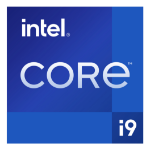
Hot Product
Intel Core i9-14900K processor 36 MB S...
Login for pricing
|
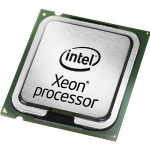
Popular
Fujitsu Xeon E5-2407V2 4C/4T 2.4GHz pr...
Login for pricing
|
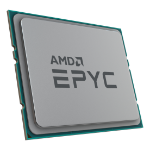 AMD EPYC 7502 processor 2.5 GHz 128 MB...
Login for pricing
AMD EPYC 7502 processor 2.5 GHz 128 MB...
Login for pricing
|

Recommended
AMD EPYC 7642 processor 2.3 GHz 256 MB...
Login for pricing
|
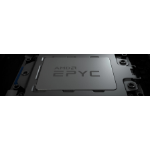 AMD EPYC 7F72 processor 3.2 GHz 192 MB...
Login for pricing
AMD EPYC 7F72 processor 3.2 GHz 192 MB...
Login for pricing
|
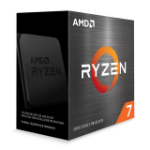
Bestseller
AMD Ryzen 7 5800X processor 3.8 GHz 32...
Login for pricing
|
|---|---|---|---|---|---|---|
| SKU |
BX8071514900K
|
S26361-F3828-L240
|
100-000000054
|
100-000000074
|
100-000000141
|
100-100000063WOF
|
| Manufacturer |
Intel
|
Fujitsu
|
AMD
|
AMD
|
AMD
|
AMD
|
| Processor lithography |
N/A
|
up to 22nm
|
up to 22nm
|
up to 22nm
|
N/A
|
up to 22nm
|
| Processor cores |
24
|
4
|
32
|
48
|
24
|
8
|
| Cooler included |
N
|
N/A
|
N
|
N
|
N
|
N
|
| Processor family |
Intel Core i9
|
Intel Xeon E5 v2
|
AMD EPYC
|
AMD EPYC
|
AMD EPYC
|
AMD Ryzen 7
|
| Processor socket |
LGA 1700
|
LGA 1356 (Socket B2)
|
Socket SP3
|
Socket SP3
|
Socket SP3
|
Socket AM4
|
| On-board graphics card |
Y
|
N
|
N
|
N
|
N
|
N
|
| Discrete graphics card |
N
|
N/A
|
N
|
N
|
N
|
N
|
| Package type |
Box
|
N/A
|
Tray
|
Tray
|
Tray
|
Box
|
